- Naruto Rasengan Guide - June 18, 2022
- Naruto Sage Mode Explained - June 9, 2022
- Naruto Aesthetic Explained - May 18, 2022
The universe of the Naruto franchise, lovingly crafted by author Masashi Kishimoto, takes world-building to the absolute highest level. The narrative of the Naruto series guides the viewer/reader progressively through an amazing framework of power scaling and skill level that makes every single fight in Naruto incredibly exciting and memorable.
Every single character in the universe exists within this framework of hand signs, speed and strength level, chakra reserve amount, and Jutsu technique. Kishimoto uses this brilliant power system to determine how to combat scenarios between different characters are going to play out.
The rules of the universe are so extensive and believable that one can imagine themselves being in it. After all, what self-respecting Naruto fan doesn’t practice their hand signs every now and again?
Let’s be honest… ninjustsu techniques MAKE the most memorable fights in the series. The highest level of ninjutsu can consume massive amounts of chakra with devastating effects.
Every shinobi worth their weight in the world of Naruto has signature ninjutsu that they can bust out in the middle of a fight to devastate their opponents. Or if you’re as cool as Kakashi, maybe you can become referred to as the Master of 1000 Jutsus.
But if you’ve ever watched an episode or read a chapter of Naruto in your life, you’ve probably heard of the Rasengan ninjutsu. This is the signature jutsu of our boy Naruto himself. The Rasengan is to Naruto what the Kamehameha is to Dragonball. Today in this guide, we’re going to explore why.
Bottom Line Up Front
The Rasengan is a wind-style jutsu passed down from the Fourth Hokage of the Leaf, Minato Namikaze, and learned (and later mastered) by Naruto. It was described by the Fourth Hokage himself as the highest form of chakra nature transformation.
The ninjutsu produces an incredibly dense rotating ball of wind-style chakra in the palm of the user. With the original Rasengan, the user can get in close to the target and slam it straight into them for MASSIVE damage. This Jutsu is Naruto’s bread-and-butter and has ended some of the most important fights in the entire series, including Naruto’s final fight with Sasuke at the end of Naruto Shippuden.
Naruto later creates variations of the original Rasengan that do things like produce multiple Rasengan orbs at once or even change the nature of the Rasengan itself. But the most impressive development of the Rasengan is the creation of the Rasenshuriken – ninjutsu entirely original to Naruto that he created from the basis of the Rasengan.
This technique is so powerful that it was deemed a forbidden Jutsu by Tsunade when Naruto first ended Kakuzu’s life with the newly developed Jutsu. But this limitation was later overcome by Naruto when he learned to throw the Rasenshuriken from a distance.
This just has already been passed down by Naruto to his pupils in the current Boruto timeline, although none will ever match the Seventh Hokage’s mastery of this amazing technique
A Crash Course on Chakra Types and Natures
For readers out there that are uninitiated in the Naruto series as of yet, I’m going to cover some basic concepts in this section that will set the groundwork for all the following information.
This is honestly a topic that deserves a whole guide unto itself, but this paragraph will do for now. Understanding these mechanics will help you appreciate the significance of the Rasengan a bit more, and hopefully, convince you to become a Naruto fan if you haven’t already!
The First Thing You Should Know is That There are Three Major Types of Jutsu: Genjutsu, Taijutsu, and Ninjutsu
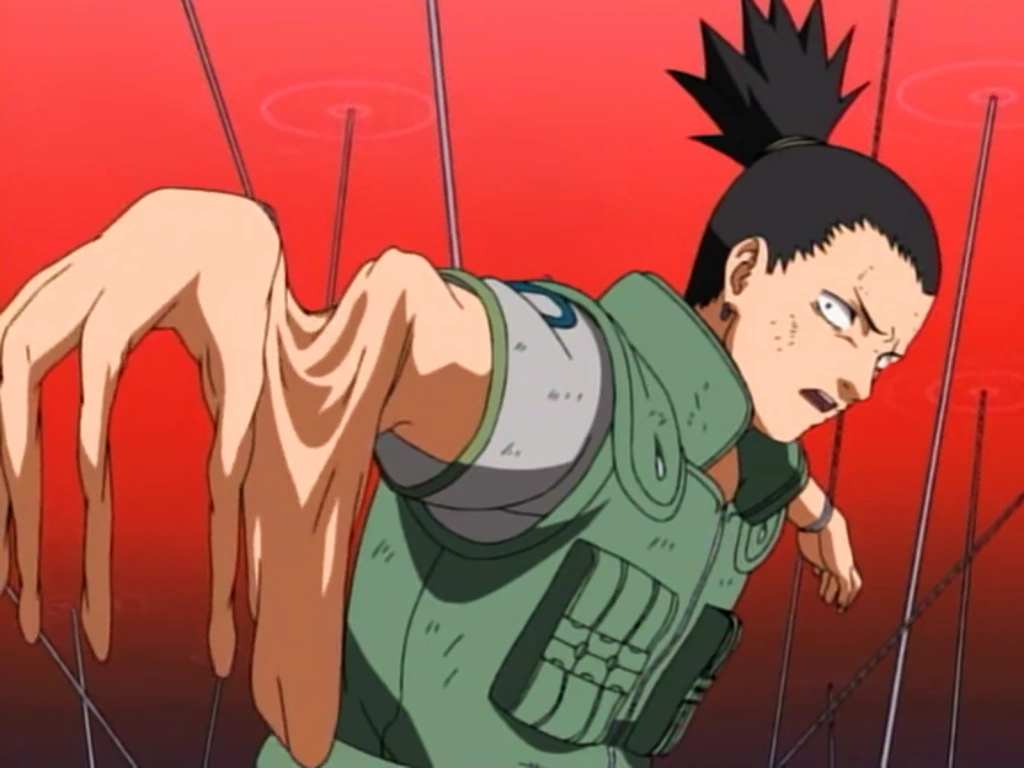
Genjutsu
Refers to the subtle use of illusionary techniques, usually cast by the user to manipulate the target in some way. The most powerful genjutsu in the series usually come from the Uchiha clan and wielders of the Sharingan, although there are plenty of other users out there. These jutsu are usually not quite as flashy but can easily change the course of a battle with the right timing.
Taijutsu
Is the use of hand-to-hand combat and can almost be thought of as traditional martial arts. Noteworthy users of this style include Guy Lee and his pupil Rock Lee.
They are well known for having access to only taijutsu, but still having the strength and dedication to become some of the strongest shinobi in the land of Konoha. And if you don’t believe me, Madara Uchiha himself (while in Ten Tail Jinchuriki form) declared Guy Lee the strongest after he unlocked the 8th inner gate.
Ninjutsu
Are typically the “headliner” of combat situations, as I mentioned before. When you think of flashy elemental-based attacks where the user weaves hand signs and channels their chakra to produce an attack that almost seems like “magic”, you’re thinking of ninjutsu.
The shinobi of the Naruto universe can manipulate their chakra in surprising ways to produce ninjutsu attacks with unfathomable destructive power. Sasuke Uchiha’s ninjutsu, Kirin, for example, literally harnesses the power of a lightning storm and concentrates the lightning bolts in a giant dragon that attacks its prey in the blink of an eye. I can’t think of much that would be more destructive than that.
The second thing you should know is that there are five major elemental Jutsu natures: fire, wind, lightning, earth, and water.
Each chakra type is extra strong against the subsequent chakra type in this list. If you have played a Pokémon game and are familiar with type advantages, this is a very similar concept. Water is strong against fire, fire is strong against wind, and so on. Although these chakra-type advantages don’t make or break a battle between two shinobi, they can certainly influence the struggle between two ninjutsu techniques.
Every single shinobi is born with a certain elemental affinity infused within their chakra. Kakashi helps Naruto determine early in his training that he has a wind-style chakra that is well-suited for combat. This is important to know because the Rasengan is a wind-style Jutsu. This means that from the very beginning Naruto was a perfect candidate to master this Jutsu.
Now that we’ve covered the significance of chakra natures, let’s talk a bit about the origins of the Rasengan technique.
The Creation of the Rasengan
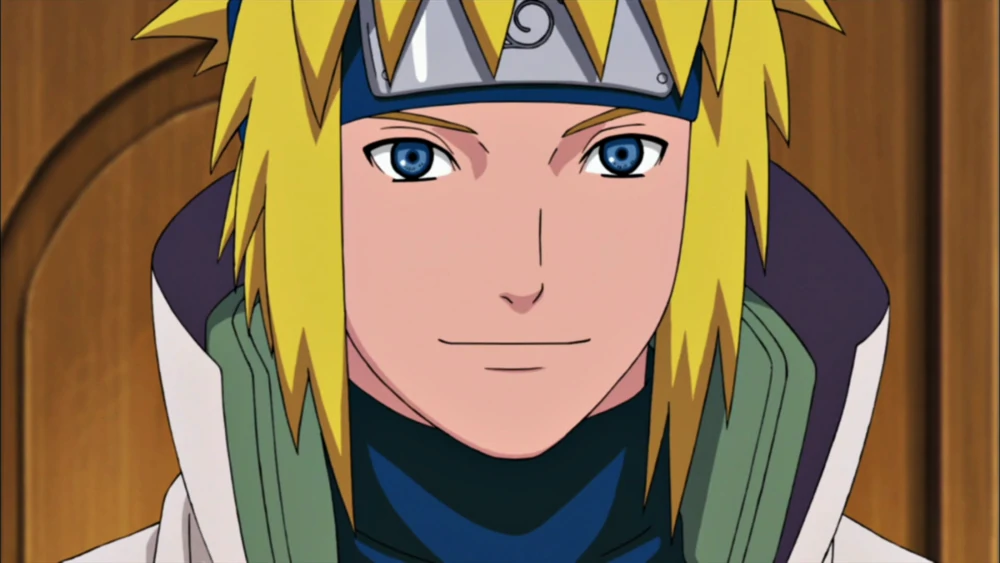
The Rasengan ninjutsu was created by the Fourth Hokage of the Leaf, Minato Namikaze, who later turns out to be Naruto’s father. Minato was hailed far and wide as a “once in a century” prodigy during his prime which explains why he was able to devise such genius-level ninjutsu.
Minato was inspired to create this ninjutsu after witnessing the Nine-Tailed Fox create a Tailed Beast Ball during their battle – a nuke-like technique that infuses all chakra natures into a dense ball of energy. Minato spent three years perfecting this jutsu and, by his own words, intended for it to be the “highest form of chakra shape transformation.”
Shape transformation is an important concept to note down. Any shinobi can gather chakra energy at their fingertips, but only the true masters of chakra control can impose their nature on that chakra and transform its shape.
Even then, this Rasengan technique was the highest form of this advanced shinobi skill. As such, any ninja that could master the Rasengan inherently gains a fundamental understanding of chakra shape transformation.
The Rasengan doesn’t require hand seals to perform. Instead, the user must gather chakra in the palm of their hand and apply their wind-style nature to it. At the same time, the user must rotate the mass of the chakra extremely fast to form a spinning orb of concentrated energy. This fast rotation speed is what gives the Rasengan its signature spiral appearance.
Naruto Learns the Rasengan
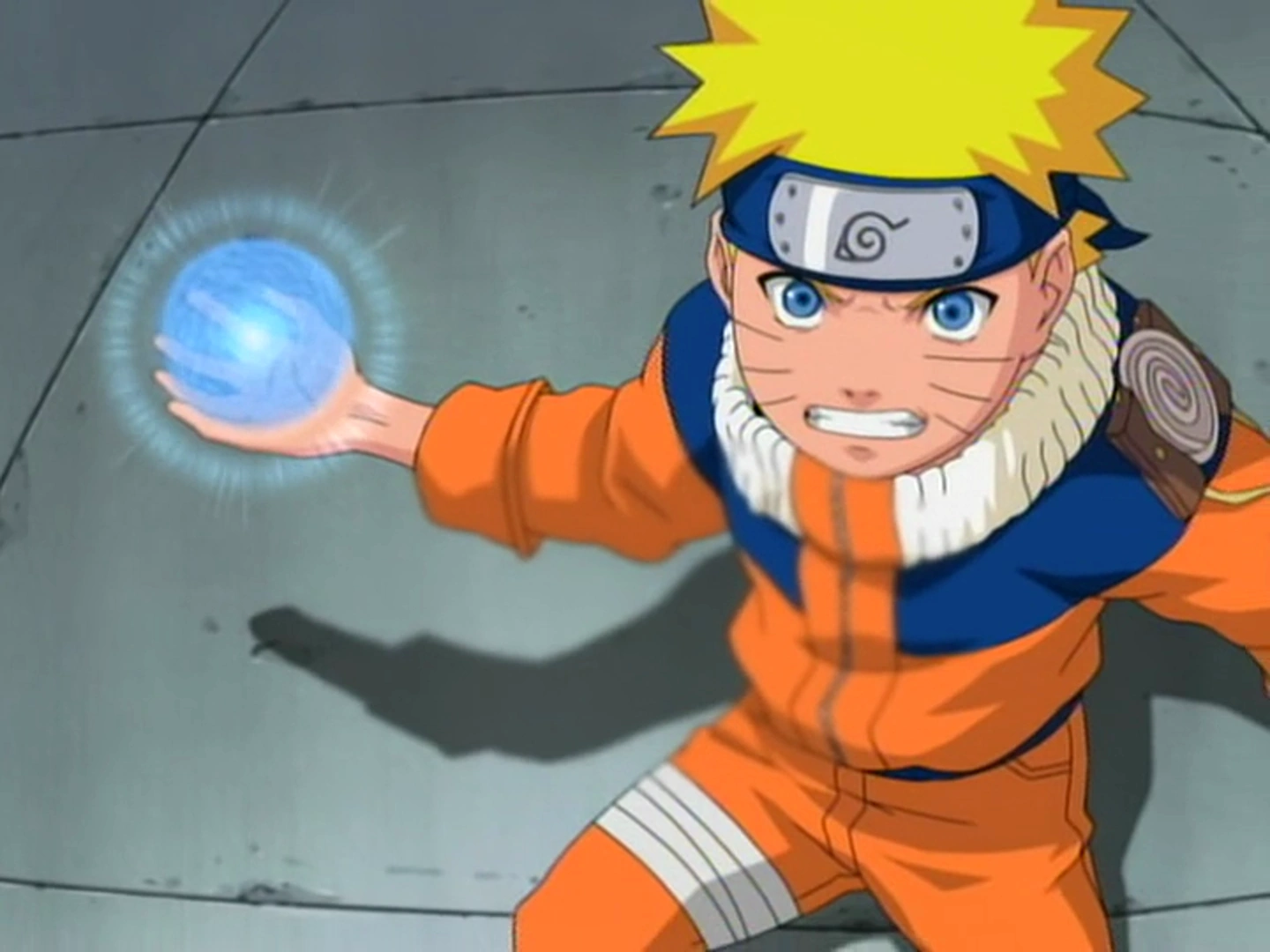
Under the tutelage of Jiraiya of the Legendary Sannin (Minato’s old master), Naruto was determined in his younger years to learn the Rasengan.
Naruto’s training began with a water balloon – he was taught to gather chakra into his palm while holding the balloon and if he was able to pop it he would be considered successful. This was but one step that would form the foundation of chakra gathering and transformation for young Naruto. Being the determined ninja that he was, Naruto practiced this day and night until he was able to perform this step consistently.
But the real challenge came next when Naruto had to add a rotation to his mass of chakra. This was a step that Minato and other shinobi of his skill level were able to complete with a single hand, although this proved to be a difficult task for young Naruto. But luckily, Naruto had a unique advantage at this point in his life – he was already a master of the Shadow Clone Jutsu.
This was exceedingly rare for any ninja, let alone a young boy, to know this Jutsu. But Naruto had gotten himself involved in some mischief a few years before and learned the Shadow Clone technique from one of Konoha’s forbidden scrolls.
Through an act of innovation that was shocking even to Jiraiya, Naruto began using shadow clones to complete the Rasengan rotation while he held the mass of chakra. This meant that Naruto could have four hands rotating the chakra instead of his single hand. Not only did he produce a Rasengan using this method, but he also did so FASTER than any ninja before.
Naruto first used the Rasengan technique in combat when he found himself in a pinch while fighting Kabuto. Kabuto cornered Lady Tsunade while attempting to assassinate her, and had demonstrated superior wit and chakra control throughout the entire fight.
But our favorite headstrong ninja wasn’t to be outdone. Naruto caught Kabuto’s kunai bare-handed, sacrificing his blood in the process, and immediately applied one of the most satisfying Rasengans in the series directly to Kabuto’s mid-section.
From this point on, Naruto continues to use the Rasengan as his main staple in combat. This ninjutsu would knock out opponents of any stature – none could withstand its might as long as Naruto could land a clean blow. But we all know that that’s not where Naruto’s power stops growing. So that brings us to the next evolution of the Rasengan…
Rasenshuriken!!
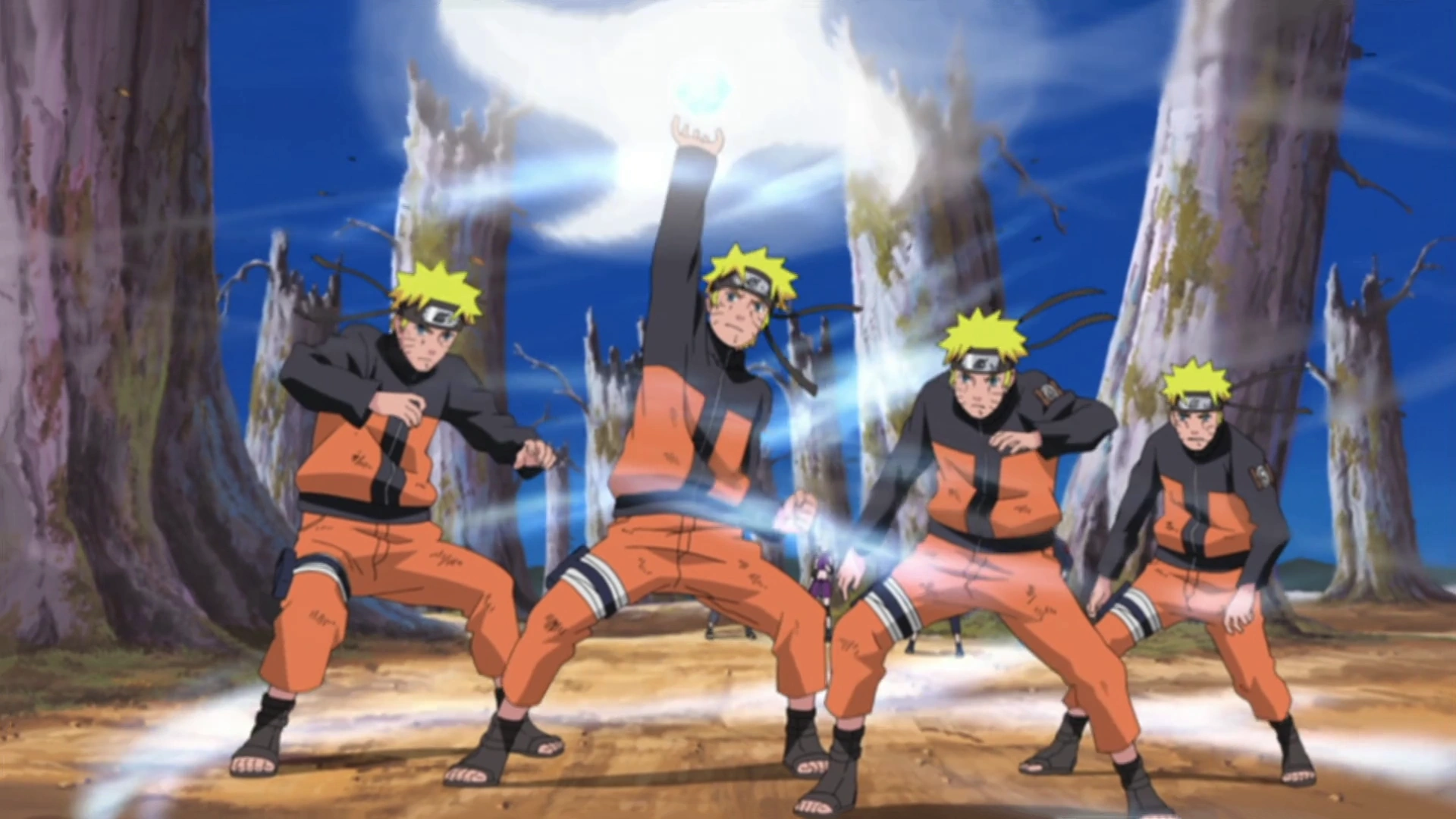
In Naruto’s teenage years during Naruto Shippuden, our hero finds himself facing a foe greater than what he could’ve ever imagined before: the Akatsuki. Naruto suddenly finds that his trusty Rasengan may not cut it with this opponent. But if the “highest form of chakra transformation” won’t bring down your enemy, what more is there to do?
Well, that’s simple… transform it further.
With the help of Kakashi and Yamato, Naruto receives intense training about his chakra nature and the process of Jutsu creation. Kakashi especially notes to Naruto that the process of Jutsu creation can take YEARS, even for a master shinobi.
But once again, Naruto’s mastery of the shadow clone Jutsu comes in handy. Naruto discovers that any time he dissipates one of his shadow clones (a.k.a. poofs them away), he gains the experience that that Shadow Clone contained. Using this exploit, Naruto produces a huge multiple of shadow clones and performs this intense chakra transformation over and over, effectively shortening the time needed to create the Jutsu by several years.
No lesser ninja would be able to perform this – the Shadow Clone Jutsu itself takes huge amounts of chakra to perform but luckily our hero has a huge reserve in the tank. Luckily for Naruto’s friends, this method allows him to perfect his brand new Jutsu just in time to bring it into battle against Kakuzu, one of the Akatsuki.
Naruto names this new Rasengan transormation the Rasenshuriken. Essentially, Naruto takes the fast-spinning orb of the Rasengan and flattens it out into a razor-sharp blade of rotating chakra. This rotating blade of pure wind-style chakra is shown to be able to bisect almost anything from solid rock to an opponent’s unfortunate flesh.
The first time that Naruto uses this technique is against Kakuzu of the Akatsuki, and he does so in a similar fashion to the Rasengan. He finds an opening and sprints directly up to the target, slamming the blade into them directly. The damage caused by this incredibly dangerous jutsu turns out to be utterly massive… almost too massive.
The damage instantly kills Kakuzu who is a massively powerful shinobi in his own right. But it doesn’t just kill him… it destroys every chakra point within his body. This is a terrifying injury for any shinobi that relies on chakra just as much as their blood to survive.
Not only that, but it partially damages Naruto’s chakra points in his arm as well. Lady Tsunade (who was Hokage at the time) observed this damage herself and determined that Naruto should be forbidden from ever using this Jutsu again. If he were to continue using it, Naruto would eventually lose the use of his arms and would suffer an irreversible loss of chakra.
After learning this news, Naruto was incredulous… was all the work to create the Rasenshuriken simply waste in the end? But as readers, we all know the story of the Rasenshuriken doesn’t end there. It only gets even more awesome.
Flying Rasenshuriken!!
Despite his reputation as something of a goofball, Naruto once again proves his ingenuity with jutsu by making an important improvement to the Rasenshuriken: throwing it.
This technique is officially dubbed the Flying Rasenshuriken and is devastating. Not only does this remove the drawback of destroying the user’s own arm when using the Jutsu, but it also adds some much-needed range to Naruto’s arsenal.
The first combat use of this technique is during Naruto’s battle with none other than the leader of the Akatsuki, Pain. The first usage of the technique catches Pain off-guard and immediately slices one of his bodies to pieces. This is no easy feat – these bodies took down the great Jiraiya after all.
The Rasenshuriken is also capable of producing a massive area of effect. As soon as it makes contact with a target, the rotating ball of chakra explodes into tons of blades that destroy everything in its path.
There is only one drawback remaining with this technique: it requires a MASSIVE reserve of chakra to pull off, especially multiple times. This Jutsu isn’t meant for just any shinobi to pick up and use. Naruto, luckily, has the largest reserve of chakra in the entire cast of characters so it works out perfectly for him. But even then, he can’t perform it an unlimited number of times.
It also still takes a significant amount of time to build up the amount of chakra necessary to produce the Jutsu. This doesn’t work out in the heat of battle because Pain isn’t going to allow Naruto time to complete this process. Naruto once again works around this by leaving shadow clones behind in a separate location to build up the chakra for him.
When the time comes during the battle for Naruto to unleash the Rasenshuriken, he poofs one of the clones and has the chakra instantly transported him through the properties of the Shadow Clone Technique. This isn’t as much of an issue for Naruto later in the series as he reaches master levels of chakra control and chakra amount, which allows him to command this Jutsu more readily on short notice.
Different Natures of the Rasengan
If you’ll remember earlier, we discussed that Naruto is a wind-style chakra user. Normally, shinobi are tied to whatever chakra natures they have at birth. But through various means that honestly deserve an article to themselves, Naruto gains access to ALL chakra natures in the later portions of the show.
The original Rasengan itself is a windy-style jutsu as well, but that doesn’t mean it can’t have other chakra types infused into it using the same rotation technique. As you can imagine, combining these additional chakra transformations with the Rasengan and Rasenshuriken produces spectacular results. I’ll mention some of the different types here!
Sage Art: Lava Release Rasenshuriken
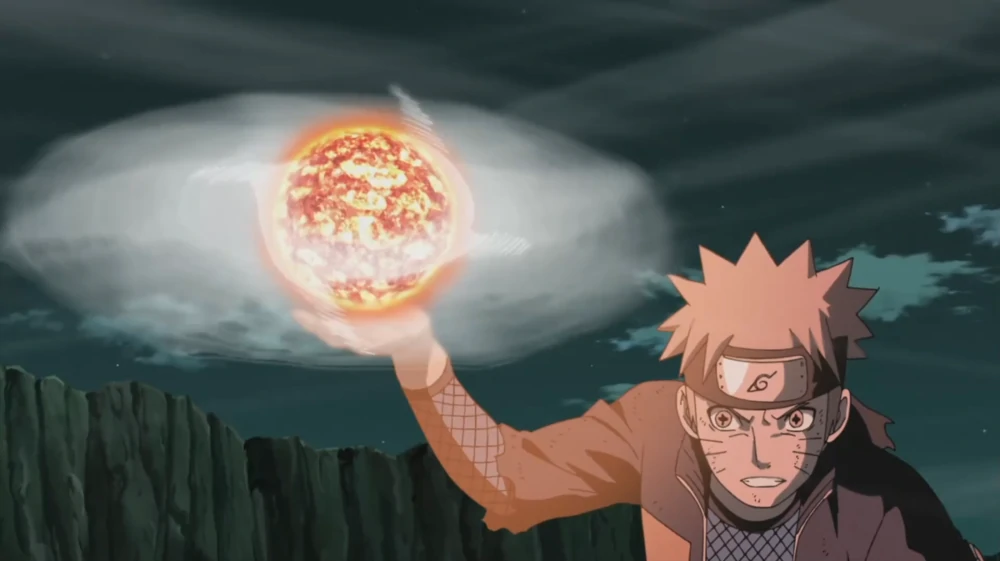
Naruto produces this Rasenshuriken in chapter 673 by accessing the power of Son Goku, the four-tailed beast. This Rasenshuriken is powerful enough to cut the Ten-Tails tree cleanly in half. The only thing that matches this jutsu’s destructive power is its awesome appearance. The center of the shuriken contains molten lava, and the blades of the shuriken produce steam because of their extreme heat.
Tailed Beast Rasengan
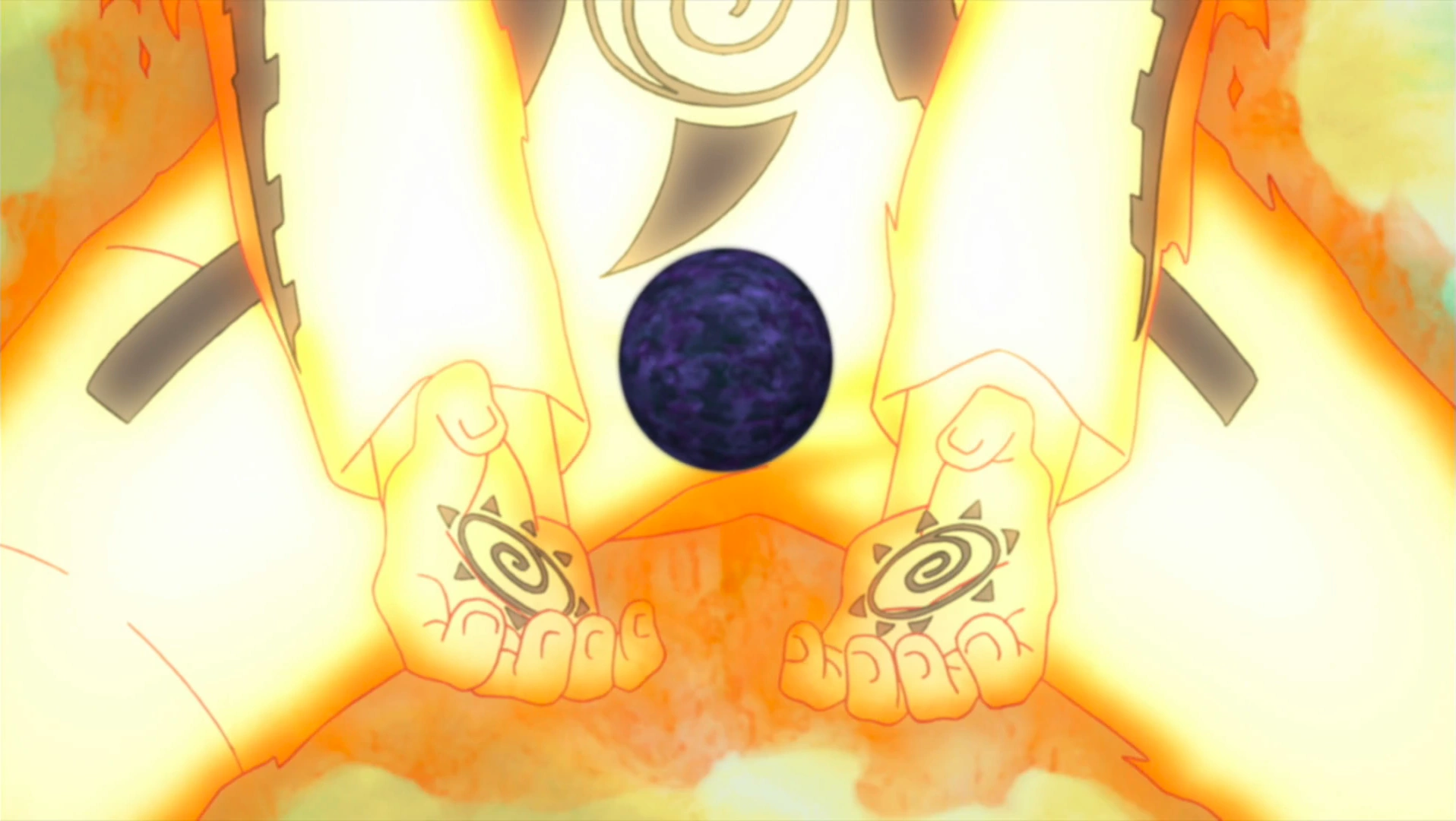
This technique proves that Naruto is truly on top of the world when it comes to his chakra control and sheer ingenuity. Naruto essentially creates a smaller version of the Tailed Beast Bomb – this can accurately be described as a “pocket nuke” normally used by tailed beasts that produce a HUGE explosion.
This technique is very unique to Naruto because he has to use the arms from his Nine-Tails Chakra Mode to even begin to produce it.
Boruto’s Vanishing Rasengan
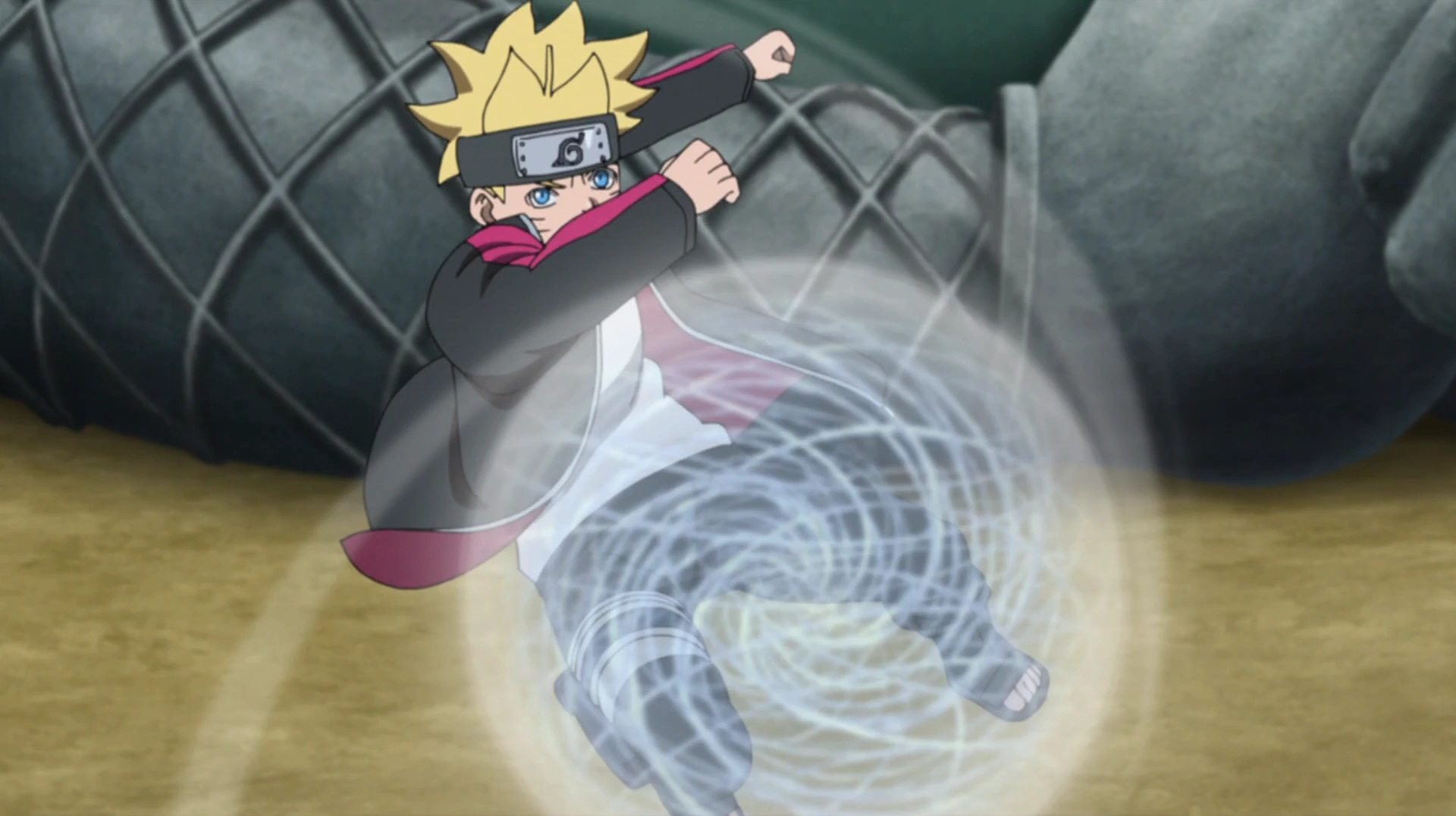
This version is specific to Naruto’s son, Boruto. Unlike Naruto in his childhood, Boruto is something of a prodigy and doesn’t struggle at all with picking up new Jutsu. As such, he picks up the Rasengan fairly quickly. But Boruto becomes disheartened when he throws the orb that he has created and it seemingly dissipates into thin air.
But as Sasuke later discovers, this isn’t the case at all. Boruto is subconsciously applying lightning nature to the Rasengan orb when it is created and this additional transformation causes the orb to vanish when thrown but will still strike its target as intended.
This creates a huge advantage of surprise and Boruto begins using this to his advantage when performing the Rasengan in battle.
Sage Art: Magnet Release Rasengan
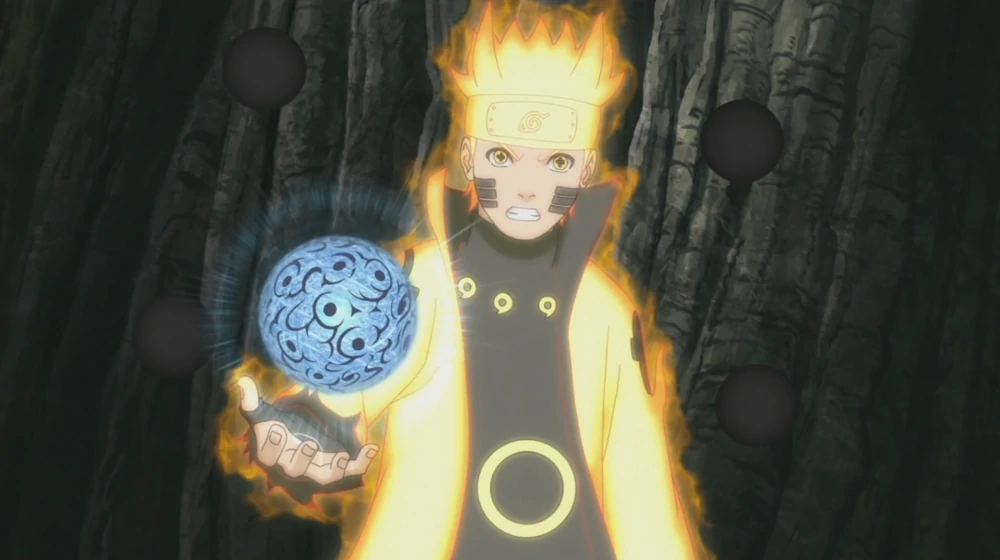
This is another Rasengan created using the power of a tailed beast: Shukaku, the one-tail. This Rasengan is interesting when compared to other variants because it doesn’t destroy the target, but rather completely immobilizes them.
Planetary Rasengan
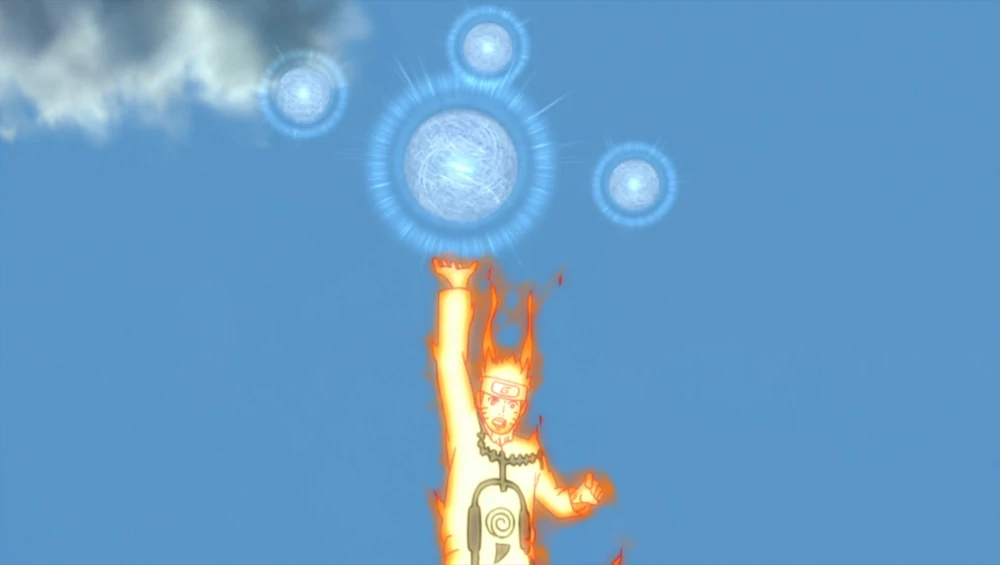
When Naruto whips this technique out, you know that he is either showing off his god-like powers or he REALLY means business.
Naruto produces this Rasengan while in his Nine-Tails Chakra Mode. He first creates a massive orb (several times larger than normal ones) in the center of his hand. He then creates three regular-sized Rasengans and has them orbit the larger one. This requires an unfathomable amount of chakra that only Naruto is capable of, and creates a shockwave of absolute devastation when used on an enemy.
FAQs
Question: What is Naruto’s double Rasengan called?
Answer: His double Rasengan is called Twin Rasengan!
Question: Are Chidori and Rasengan the same?
Answer: No, they’re not. Rasengan is better for a larger amount of damage, but Chidori is good for precision. Chidori and Rasengan can be used very differently.
Question: Who created Red Rasengan!
Answer: Naruto did when he went to fight the Akatsuki.
Conclusion
The Rasengan was learned by Naruto early into his journey and became the Jutsu that he was known for over the years. One could say that the evolution of the Rasengan parallels the evolution of Naruto himself – not only his physical abilities but his character growth as well.
Its versatility and power are top-tier and only increase as Naruto adds his spin to it (pun intended) time after time. He used it as his tool to shape his destiny and the future of the ninja world, eventually rising to the rank of Hokage and continuing to use it as his weapon of choice against enemies of the Leaf Village.
This technique has also been passed down to Konohamaru and Boruto, meaning that it will continue into the next generation of the Naruto universe. Fans can expect to see plenty more of the Rasengan in the years ahead. But one thing is for certain, no Rasengan will ever surpass the Rasengan of the Seventh Hokage himself, Naruto Uzumaki. Believe it!

